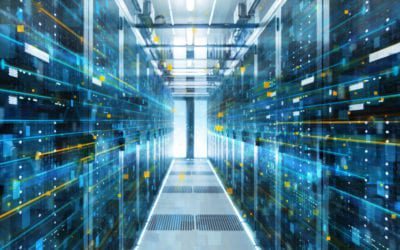Redefining the Customer-Centric Utilities Company in the Age of Distributed Energy Resources
Author: Vikas Mukhi | | March 22, 2018
Utilities are facing unprecedented pressures. In 2018, decisions are weighed against factors such as the aging grid infrastructure and design, complex and changing regulatory requirements, and evolving customer expectations of their utilities provider. While the grid may not have been built to accommodate distributed energy resources (DERs) such as rooftop solar, DERs are a new reality to meet demand and compliance.
The key to a successful DER implementation strategy is in improved customer relationships, including the adoption of successful tools for self-service. Integrating two-way communications into your business model can enable cost-savings, improve delivery, and help your organization achieve customer satisfaction.
Understanding What Digital Consumers Want from Utilities
“Utility customers as modern consumers seek more than just energy” writes Jeff Adams of Greentech Media. Consumers’ desire for clean energy is so strong, it’s cited by utilities as the top motivator for investment in renewables.
When given the opportunity to engage with DER programs, customers often exceed the expectations of their local utilities. An offered buy-in to a 500-kilowatt community solar garden in Fremont, Nebraska sold out so quickly, it was expanded to 1.55 megawatts (4,928 panels). Despite the expansion, it sold out in six weeks, and has a waiting list.
Utilities Customers Want Information On-Demand
Notably, digital consumers also want information and self-service on-demand. Seventy-five percent of survey respondents would rather solve problems on their own — such as through mobile or web app — than talk to a customer service representative (CSR).
In fact, one-third of utilities customers would rather clean a toilet than talk to a CSR. One Canadian utility which transitioned to self-service offerings received 65 percent fewer calls each year — saving significant operational expenditures despite their investment in upgraded customer-facing applications.
The Value of Digital Customer Communications
Ultimately, as Adams highlights, utilities have a built-in advantage over other industries that aren’t already a part of consumers day-to-day lives: “There’s inherent customer trust that utilities will guide them through issues and grid inefficiencies.”
In addition to meeting customers on their own-terms with self-service options, utilities should modernize and adopt multi-channel communications to communicate need-to-know information about DERs through emails, text, application push notifications, and other modes.
Committing to Customer-Centric DER Management: A Case Study
Some of the most innovative utilities are making it easy for customers to buy-in to clean energy on their own terms. A partnership between Tesla and Vermont Green Mountain Power (GMP) offered Powerwall battery energy storage in monthly payments at effectively half price.
While GMP estimates the program will take the equivalent of 7,500 homes off the grid, the program’s self-service resources succeeded thanks to no small technical efforts by GMP’s information technology (IT) team.
Before the program was launched, the Vermont utility had to commit to create resources for digital opt-ins, payments, and customer education, and to create the technical infrastructure necessary to leverage the rich Internet of Things (IoT) data streams from the connected Powerwall battery storage at consumer homes.
Creating a Customer-Focused DER Strategy
The success of DER programs at utilities such as GMP, Sacramento Municipal Utility District, Consolidated Edison’s Brooklyn-Queens Demand Management, and others shows that today’s customers want opportunities to actively engage with clean energy resources — regardless of factors such as regulatory requirements or the aging grid infrastructure.
Utilities who are prepared to provide self-service opportunities for renewables will be positioned to gain a significant advantage in customer relationships.
Just as importantly, as utilities consider the value of self-service customer DER offerings, it’s important to plan to harness and analyze the data streams from DER and IoT technologies for rich customer insights, grid optimization, proactive maintenance, and other key strategic activities.
To learn more about how customer self-service technologies can create a digital bridge, download the Datavail white paper today: Managing Distributed Energy Resources: Utilities Can’t Do It Without Customers.
For additional assets please see our Utility Self-Service Resource Center.
Related Posts
How to Solve the Oracle Error ORA-12154: TNS:could not resolve the connect identifier specified
The “ORA-12154: TNS Oracle error message is very common for database administrators. Learn how to diagnose & resolve this common issue here today.
Data Types: The Importance of Choosing the Correct Data Type
Most DBAs have struggled with the pros and cons of choosing one data type over another. This blog post discusses different situations.
How to Recover a Table from an Oracle 12c RMAN Backup
Our database experts explain how to recover and restore a table from an Oracle 12c RMAN Backup with this step-by-step blog. Read more.



